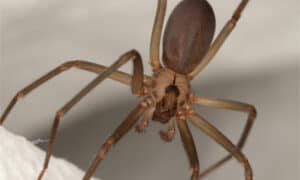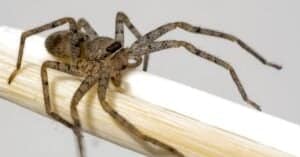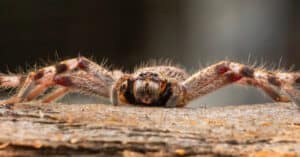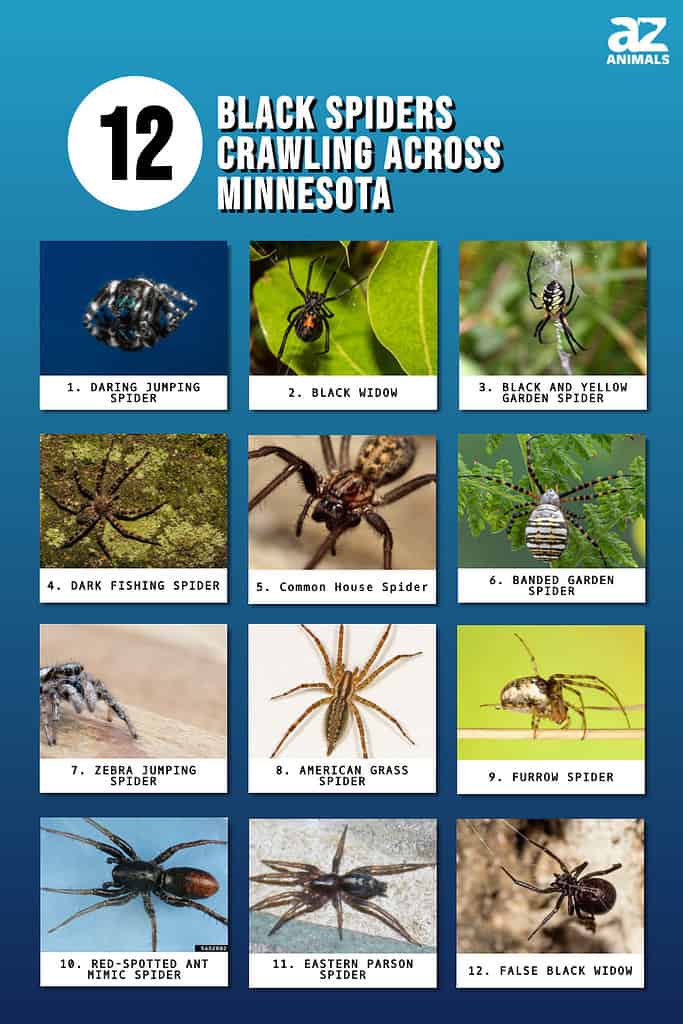
While many people shudder at the thought of seeing a spider, these creatures are mostly harmless and beneficial to the environment. However, there are several species that can pose serious medical threats. And due to Minnesota’s diverse landscape, the state features many species in all colors, sizes, and shapes. Discover 12 common black spiders crawling across Minnesota, including one of the most dangerous species in the country.
1. Daring Jumping Spider
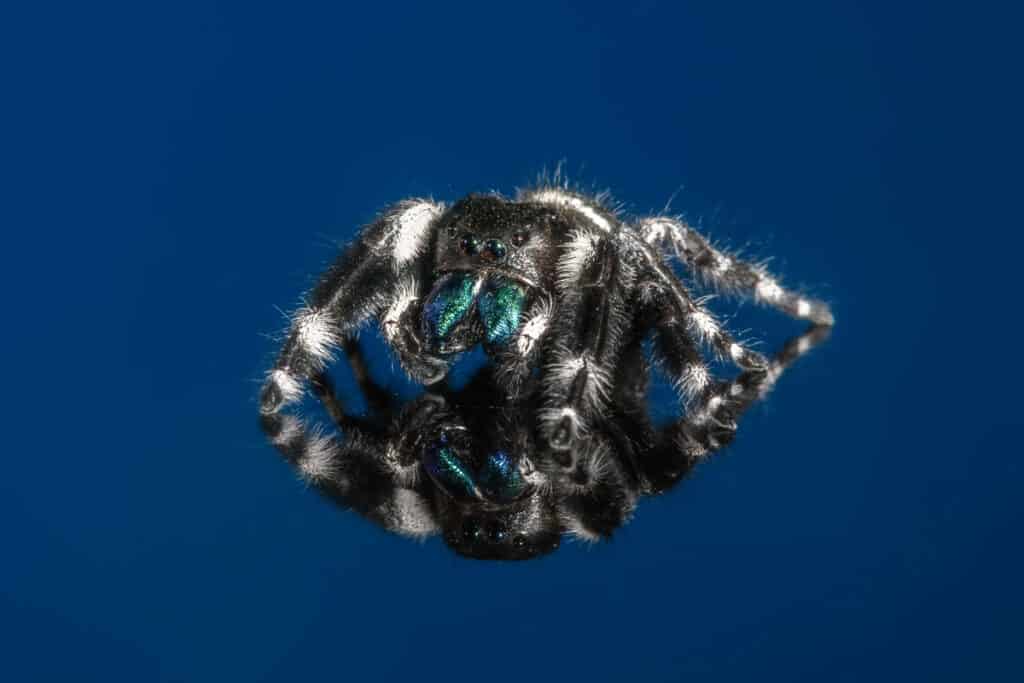
The daring jumping spider is a large species of jumping spider but it rarely bites humans
©iStock.com/JWJarrett
The daring jumping spider is a very common and widespread species throughout the Eastern United States, including Minnesota. However, they are mostly absent from the northern counties in the state. You can find this spider in a variety of habitats, including prairies, woodlands, backyards, gardens, and houses. And you are most likely to see them during late spring and early summer when their mating season takes place. You can recognize the daring jumping spider by its wide abdomen, green mouth parts, and black and white striped body.
2. Black Widow
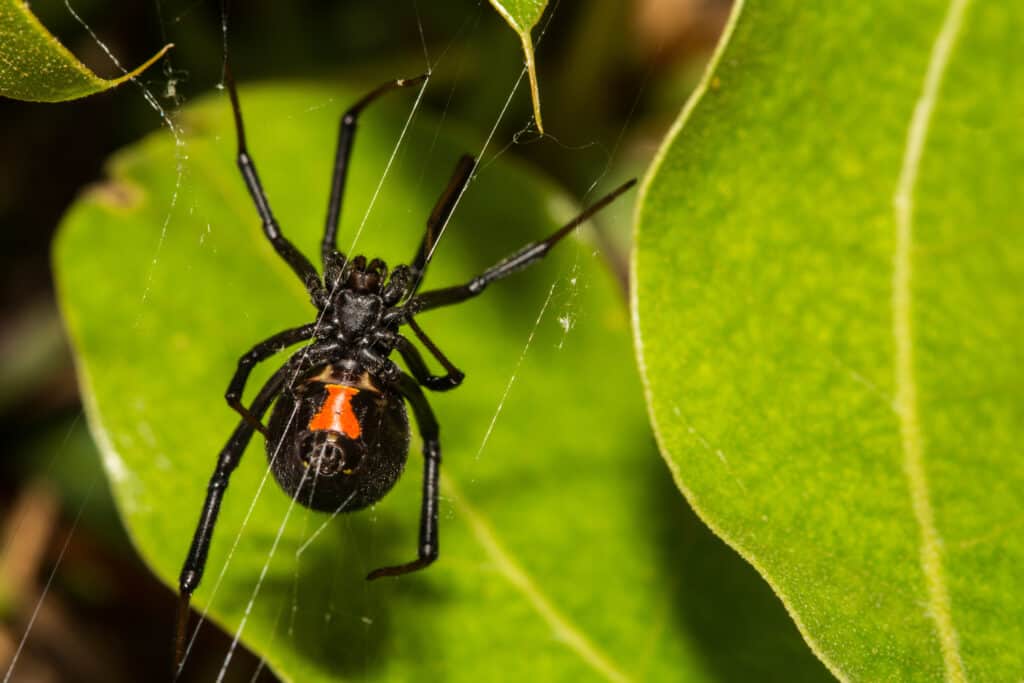
Black widow spiders are dreaded for their venom.
©Jay Ondreicka/Shutterstock.com
The black widow is one of two highly venomous spiders across the United States, with the other being the brown recluse. While black widows are native to the Upper Midwest, it is relatively rare to encounter one. They live all across most of Minnesota, but they often stay hidden in woodpiles, burrows, dark corners, crawlspaces, and any dark sheltered place away from activity. You will recognize them by the bright red hourglass marking on their abdomen. While these spiders are highly venomous, they are not aggressive and very rarely bite humans. However, seek medical attention immediately if you are one of the unlucky few.
3. Black and Yellow Garden Spider
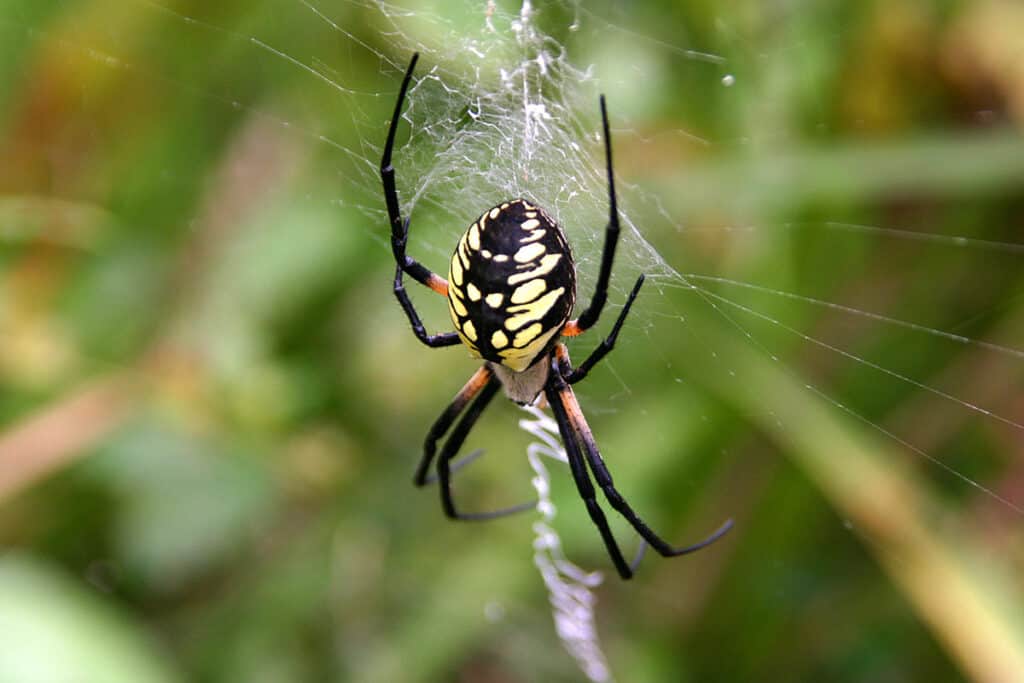
The black and yellow garden spider is a common black spider crawling across Minnesota.
©iStock.com/AwakenedEye
While not completely black, the black and yellow garden spider is a common occurrence across Minnesota. True to their name, they are often seen in gardens, fields, and roadsides. And you are more likely to encounter them during late summer and fall, especially large females. This species is easy to distinguish due to its bright contrasting colors and unique patterns. And their webs are typically near water in a sunny location. This spider can occasionally wander indoors, but they are more often around door frames and windowsills.
4. Dark Fishing Spider
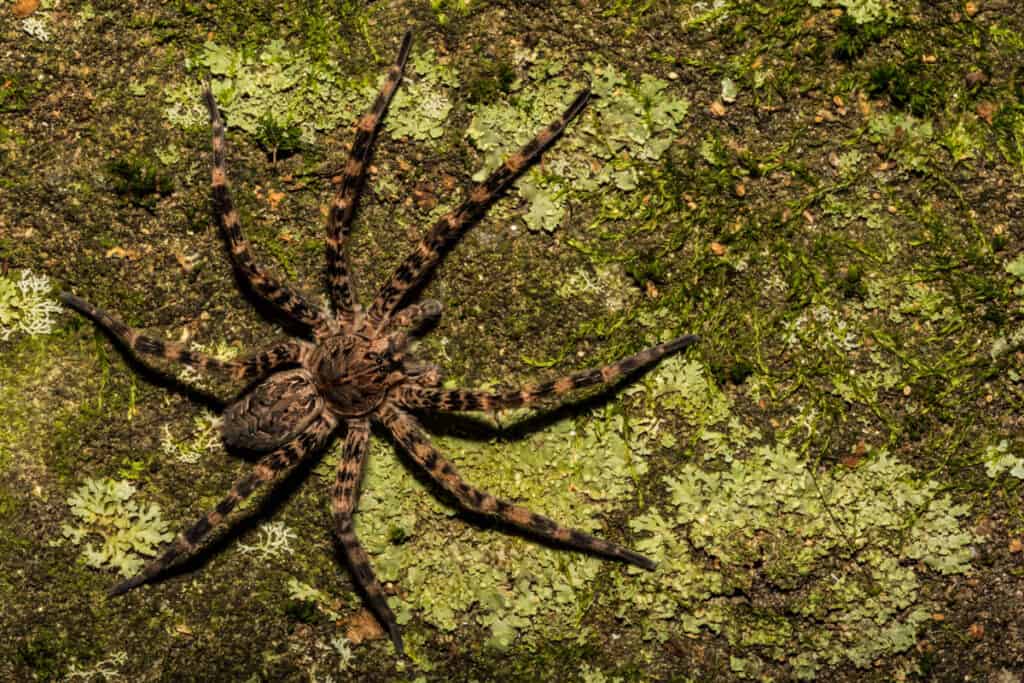
The dark fishing spider can run across the surface of the water or dive into the water to catch prey.
©iStock.com/JasonOndreicka
The dark fishing spider is scattered across the state, with higher concentrations in Eastern Minnesota. They are not as common as the jumping spider, but they are still a regular occurrence in the region. You are more likely to spot these spiders from early May through September, with the mating season occurring in mid-summer. This species is the largest in Minnesota and features light to dark brown coloring with black or brown bands. Some can appear darker than others. They live in deciduous forests away from water and can sometimes find their way indoors if the building is close to the forest.
5. Common House Spider
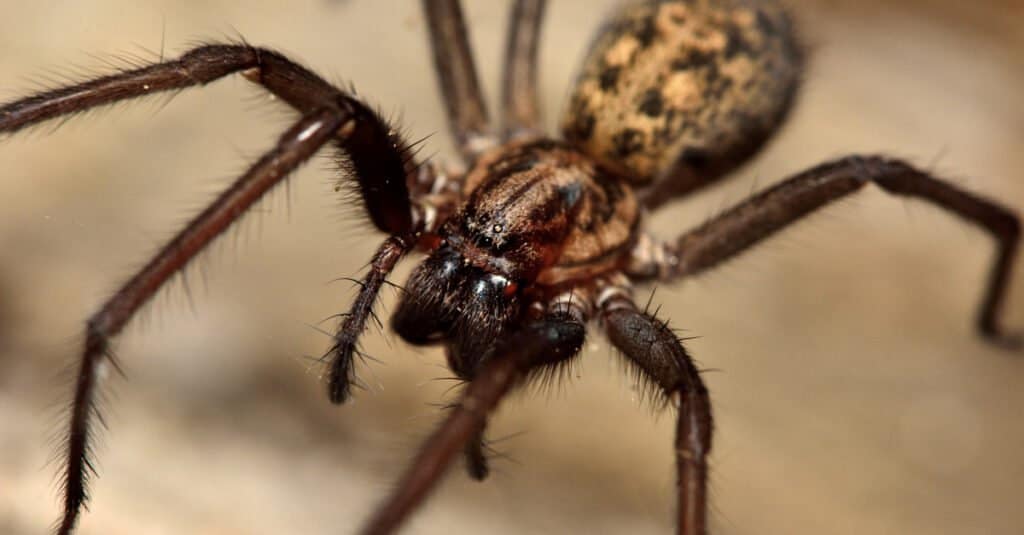
Common House Spiders reside in corners and typically choose spots where there’s good airflow.
©IanRedding/Shutterstock.com
Despite its name, the common house spider is not very common in Minnesota. However, they have been reported in several counties scattered across the state. While they can live year-round inside, they can’t survive Minnesota winters outside. You will find them near human habitations, such as houses, barns, sheds, and other buildings. And they are nocturnal, typically hiding in dark corners during the day. These spiders range in color from light brown to very dark brown, almost black. However, most are light to dark brown. And they have large, bulbous abdomens and long legs.
6. Banded Garden Spider
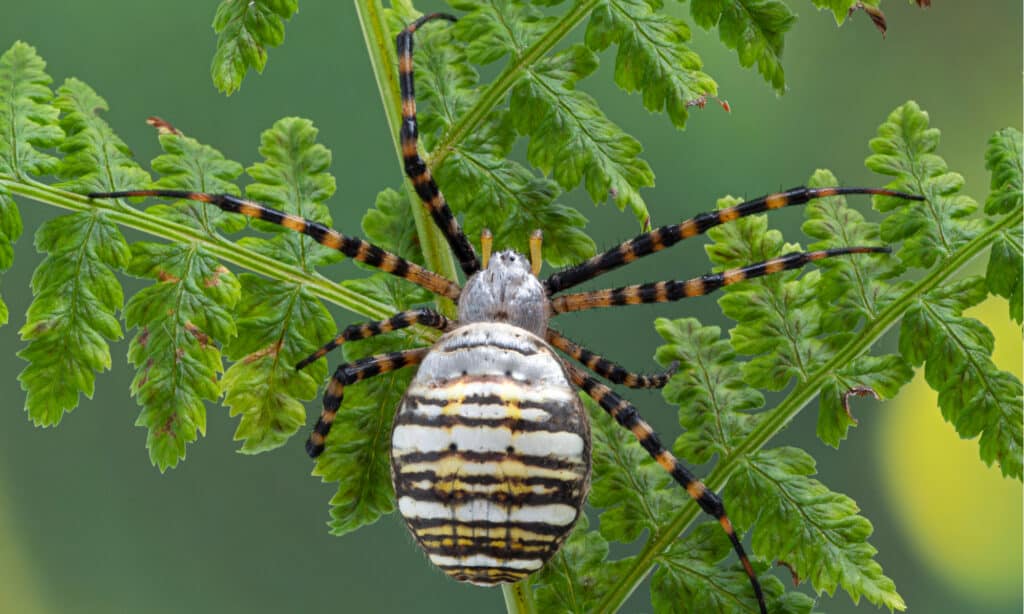
Banded garden spiders are medium to large orb weavers.
©Ernie Cooper/Shutterstock.com
The banded garden spider is easily distinguishable by its heavily-banded appearance. They are black and yellow. Or sometimes black and orange. And while some appear more yellow with fewer black stripes, others are more black with less yellow. They are medium to large orb weavers, and they inhabit open, sunny areas, typically around large outdoor plants. This species is common and widespread across Minnesota, with most sightings occurring from late August to the first freeze during the fall. You can often find them in gardens or open areas, like tallgrass prairies. Garden spiders are good for your plants, as they keep down pests.
7. Zebra Jumping Spider
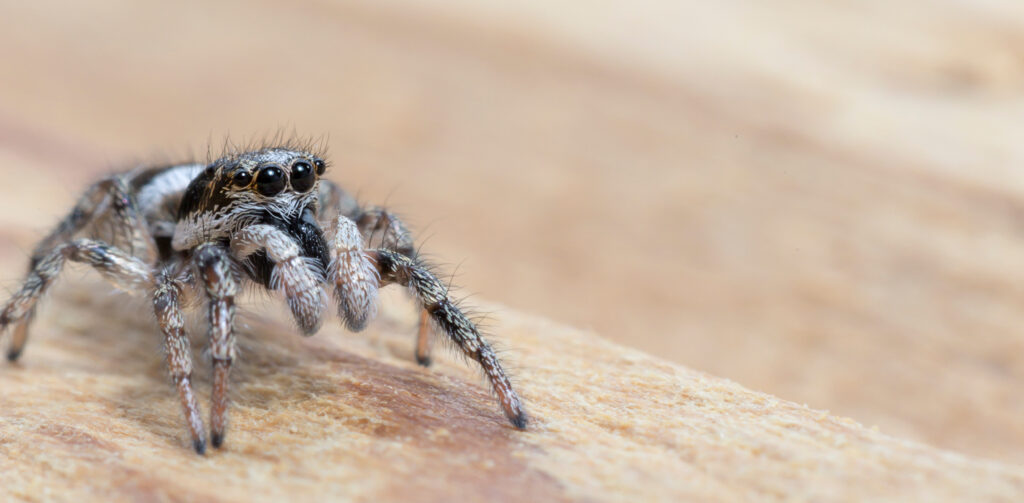
A zebra jumping spider.
©Rabanser/Shutterstock.com
The zebra jumping spider is one of the common black spiders crawling across Minnesota, especially in the northeast and southeast portions of the state. You will often find them on the outside of homes, walls, and fences in sunny spots. And they can occasionally find their way inside. They also hang out around tree trucks and rocks. These small jumping spiders are easy to recognize due to their black and white stripes and large abdomens. Zebra jumping spiders breed from spring to early summer, so this is when you are most likely to see them.
8. American Grass Spider
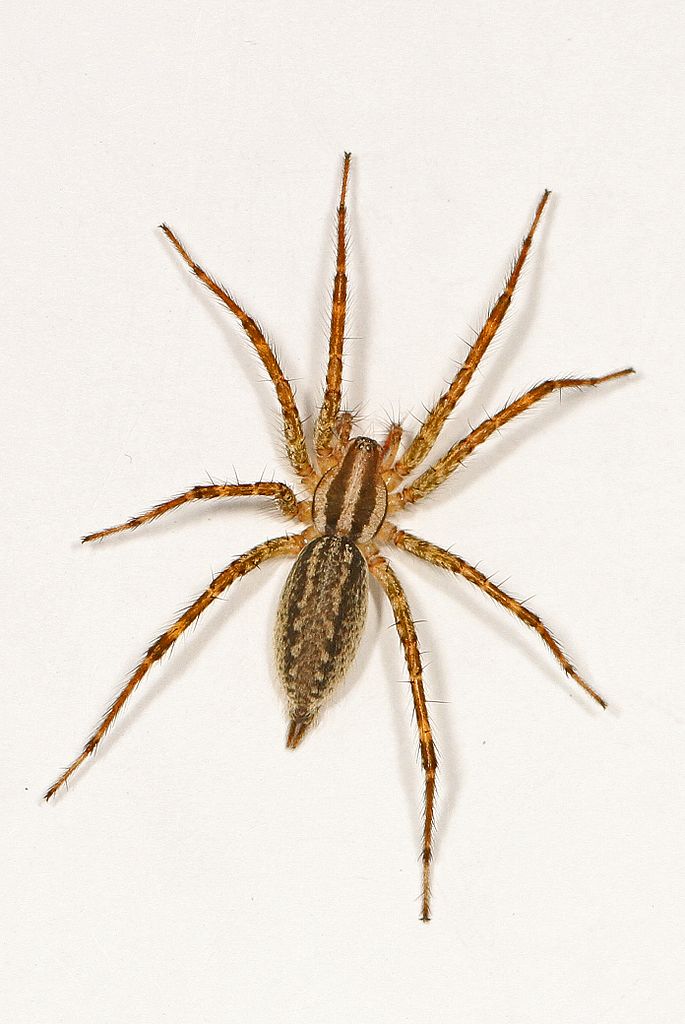
The harmless American grass spider is one of the most common spiders in the United States
©Judy Gallagher, CC BY 2.0 – License
Minnesota has several species of grass spiders, and they are brown with dark brown to black markings, with some appearing lighter or darker than others. They are a type of funnel web spider, and they are common across most of Minnesota. As their name suggests, they are often found in grass, where they weave their webs. While they spend a lot of time around grass, you can also find them in woodlands, bushes, stone piles, gardens, outside of buildings, and inside homes. While they are prevalent outside during the summers, you might see an increase in grass spiders in your home during the fall when temperatures begin dropping.
9. Furrow Spider
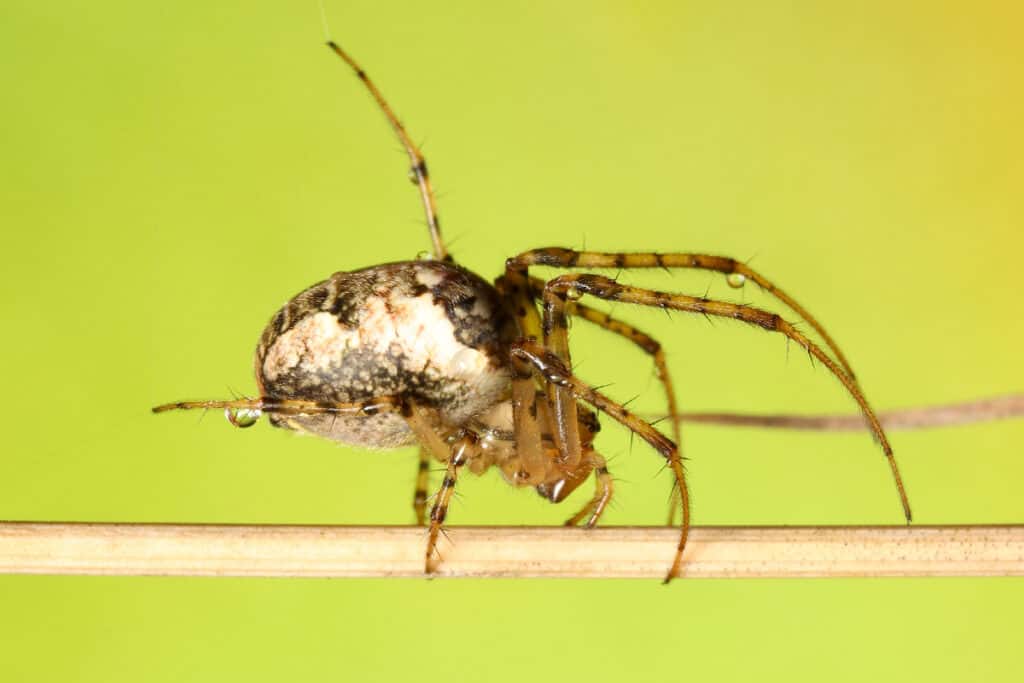
The furrow spider possesses intricate, foliate markings that look like arrows
©iStock.com/Dan Olsen
Also known as the bordered orbweaver, these medium-sized spiders are often considered house spiders. They are common in Northern Minnesota and are a year-round species, meaning you can see them any time of the year. They frequently inhabit houses, barns, and other manmade structures. But you can also find them on fences or bushes near water, where they build their webs. Furrow spiders are a mottled brown and black color, with some appearing darker than others. And the abdomen features a leaf-shaped marking.
10. Red-Spotted Ant Mimic Spider
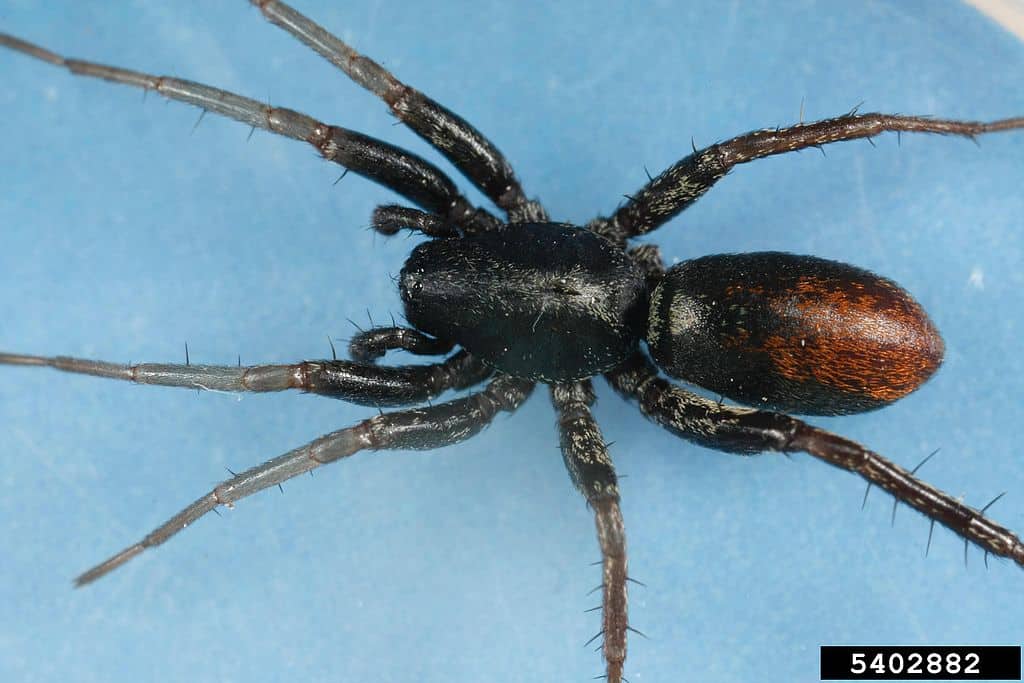
The red-spotted ant mimic acts like an ant in order to sneak up on its prey
©Joseph Berger, Bugwood.org; University of Georgia / CC BY 3.0, via Wikimedia Commons – License
The red-spotted ant mimic spider is occasionally spotted in Minnesota, but its prevalence in the state is unknown. These spiders may give you quite a fright because they are sometimes confused with black widows. But they are actually harmless to humans. These black and red spiders act like an ant to better help them attack their prey. This species lives in wooded habitats, like parks. And you can find them under stones or in shrubs. You can sometimes find them in your home, but they are not a common pest. They are more prevalent in the state during spring and summer when ant populations are higher.
11. Eastern Parson Spider
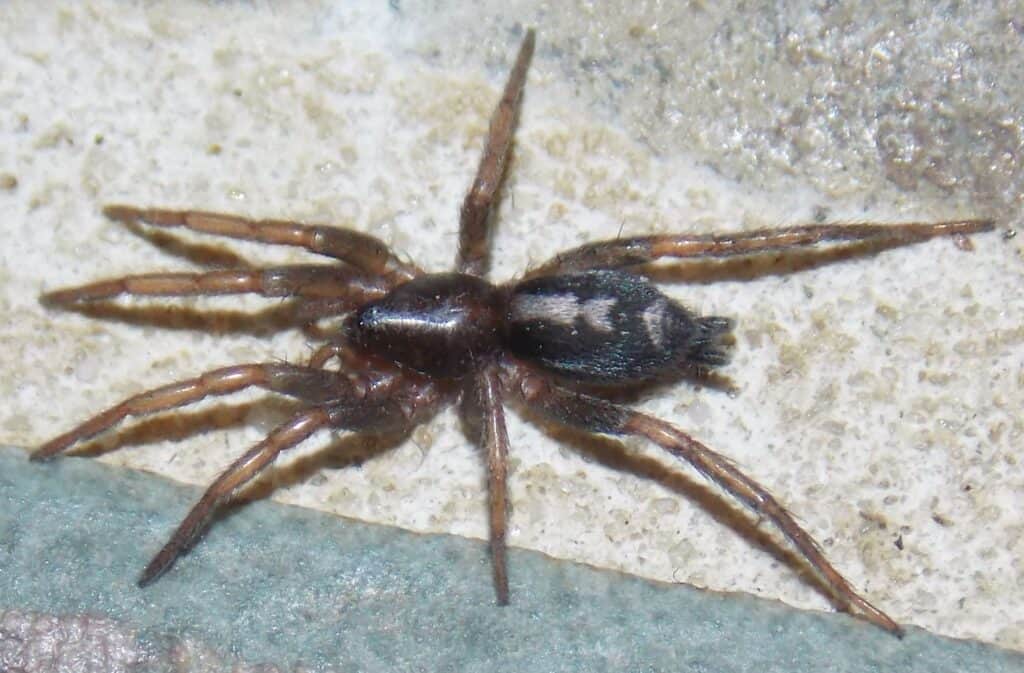
The eastern parson spider features a marking that looks like an 18th-century parson’s necktie
©Fyn Kynd from Searsmont, Maine, United States / CC BY 2.0, via Wikimedia Commons – License
The eastern parson spider is a common species throughout Minnesota, where they are most active from April to October. They are often found in and around buildings, but you can also spot them frequently in deciduous forests and woodlands. These fast spiders are nocturnal and stay hidden inside their silk during the day. They are medium-sized and dark brown to black with light markings on their abdomens. And their legs are stout and spiny. You can find them hiding under stones and logs.
12. False Black Widow
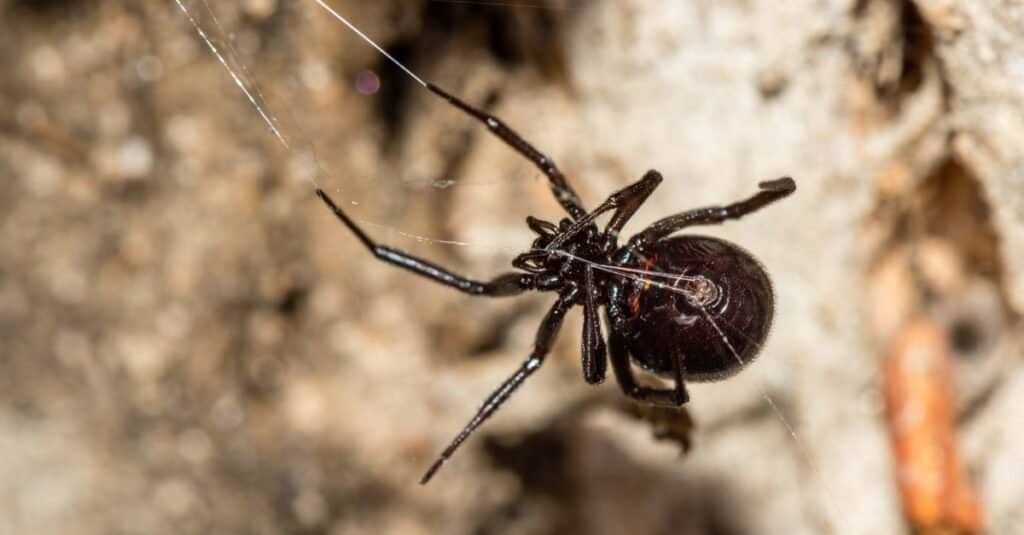
False widows lack the red hourglass marking.
©Danie Spreeth Photography/Shutterstock.com
These cobweb weavers look similar to black widows but are smaller and lack the red hourglass on their abdomen. They can also appear more brown or dull black instead of glossy black. The false black widow is uncommon in Minnesota, with only some populations living in north-central counties. They are a year-round species and are most often found inside buildings and caves. Unlike the black widow, false widows are not medically significant to humans. Their bite might cause slight irritation, but that’s about it.
Summary Of 12 Black Spiders Crawling Across Minnesota
| Number | Spider |
|---|---|
| 1 | Daring Jumping Spider |
| 2 | Black Widow |
| 3 | Black and Yellow Garden Spider |
| 4 | Dark Fishing Spider |
| 5 | Common House Spider |
| 6 | Banded Garden Spider |
| 7 | Zebra Jumping Spider |
| 8 | American Grass Spider |
| 9 | Furrow Spider |
| 10 | Red-Spotted Ant Mimic Spider |
| 11 | Eastern Parson Spider |
| 12 | False Black Widow |
The photo featured at the top of this post is © Danie Spreeth Photography/Shutterstock.com
Thank you for reading! Have some feedback for us? Contact the AZ Animals editorial team.



